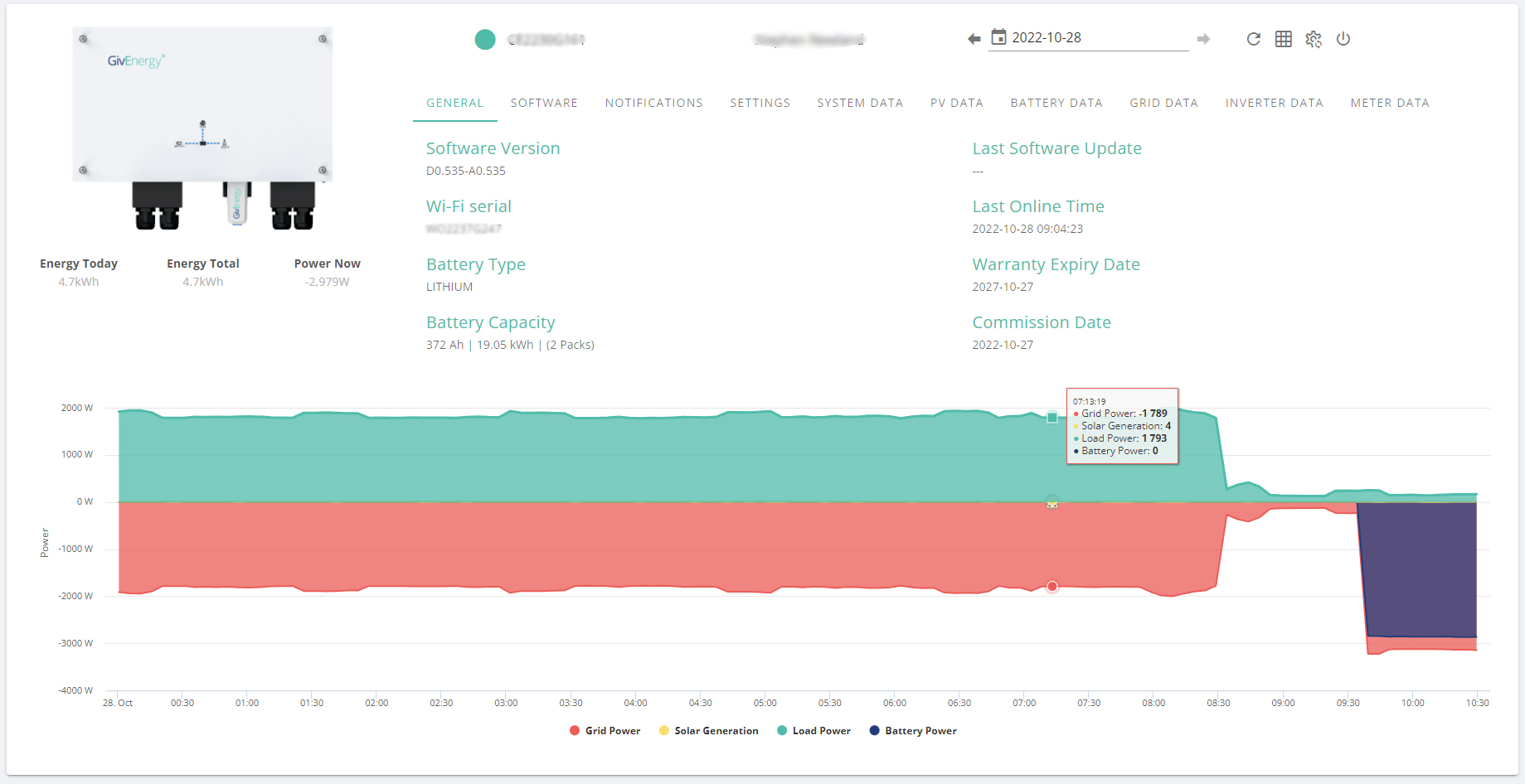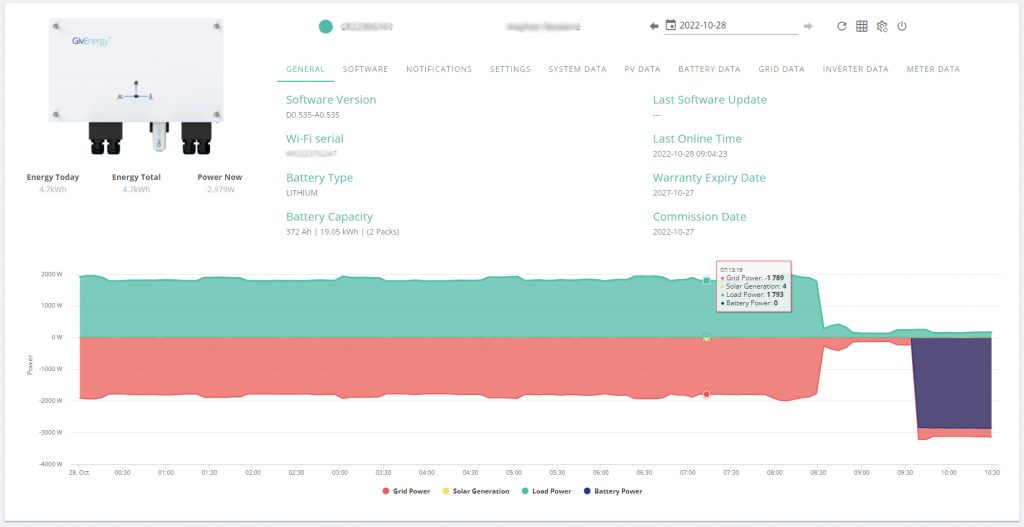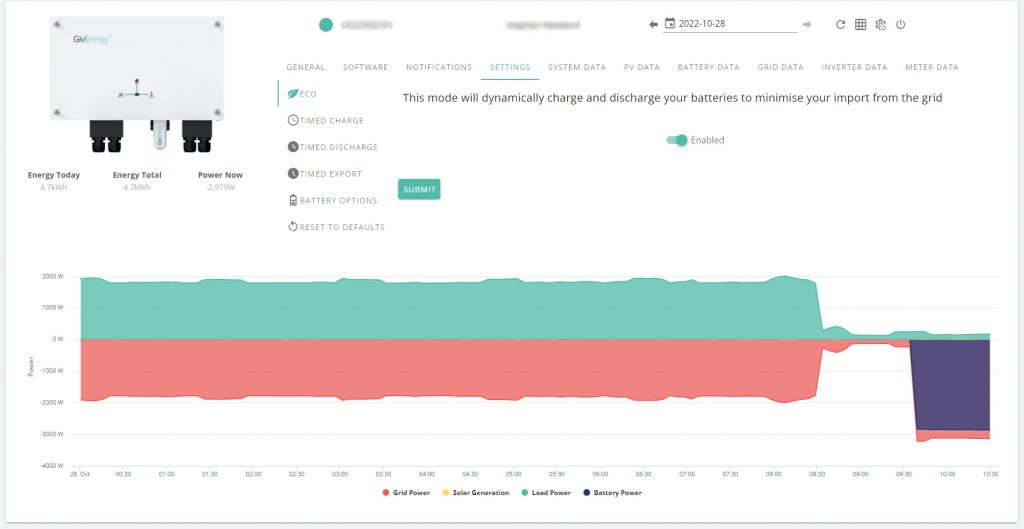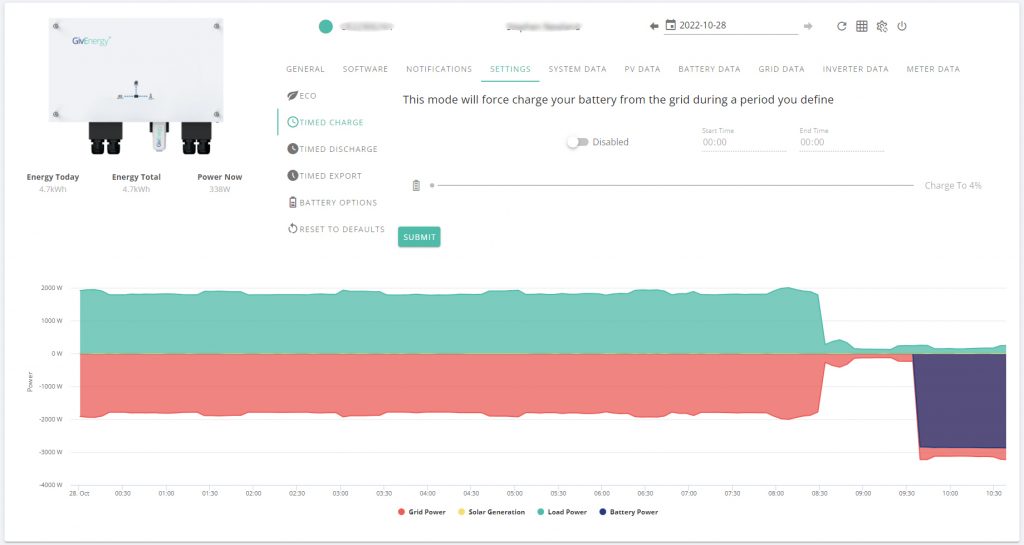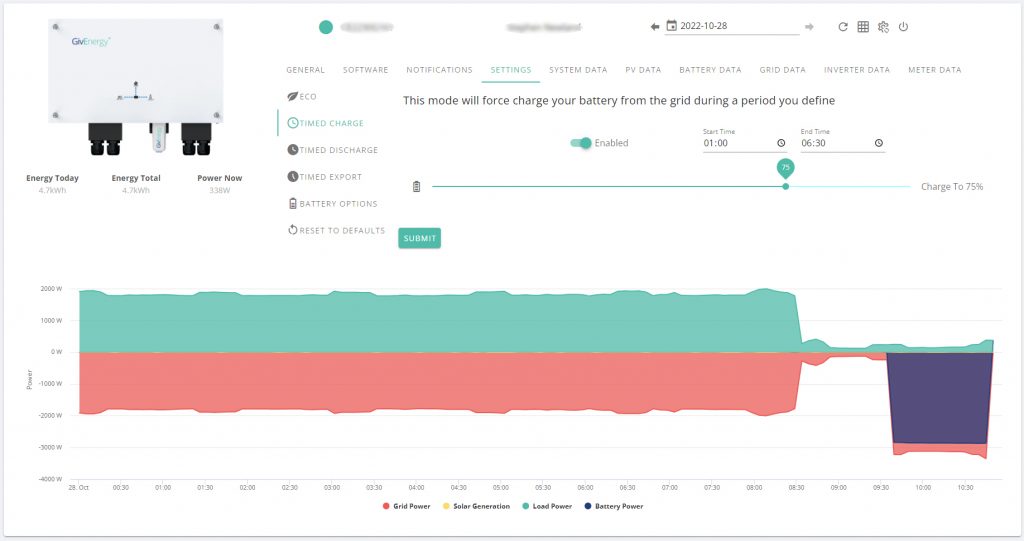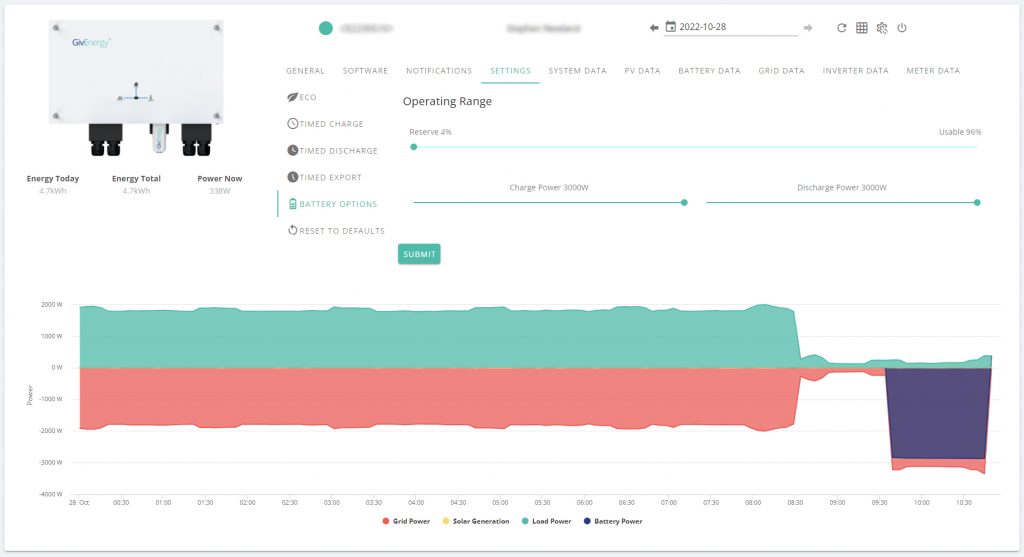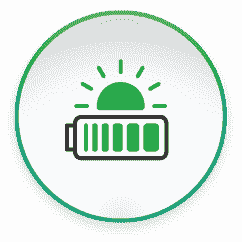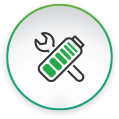Setting GivEnergy Charging Times
All home battery systems will by default charge up from spare solar. In addition, all the ones we sell also have the option to charge up at specific times of the day or night so allowing you to charge up on cheap electricity if you have a ‘time of use’ tariff such as Economy 7 or Octopus Go.
Here we will go through the process for setting charging times on a GivEnergy AC (battery) inverter; the process will be similar for a GivEnergy hybrid inverter.
Accessing Charging Mode
In your online GivEnergy page, select the Inverter Information page. By default it will show the General tab showing key information about the system such as Software Version and Warranty Expiry Date:
Select the Settings tab. This will show that the Eco mode is Enabled by default, i.e. the battery will charge from excess solar:
In the left-hand menu select Timed Charge:
By default this will be Disabled, so move the switch to Enabled. Then set your preferred charging Start Time and Stop Time. You will have specific times stipulated by your energy supplier, but typically it will be from around midnight to 7am. You can also set the Charge To percentage. For example, depending on how much excess solar you expect to get, you might set this to 50% in the autumn and spring (because you expect to only fill it half full with solar) and 100% in December/January (because you expect to have no spare solar):
When you have finished press the Submit button. A moment later you will get a ‘Settings Changed Successfully‘ message. That’s it, the system will now charge every day at the times you have set until you change the settings again.
Winter Considerations
Most Lithium-Ion based batteries can suffer if they are discharged to a very low level, particularly when cold. It therefore makes sense to institute a timed charge as above at least once a month, ideally at least once a week, during the winter unless you know you will have plenty of spare solar – see our blog Keeping Your Home Battery Charged in the Winter. This can be done even if you have no access to a cheap overnight tariff, though there will be a small cost involved as some energy is always lost during charging and discharging (typically about 10% per ’round trip’).
Another consideration is that Lithium batteries need regular battery balancing. This typically automatically occurs while the batteries sit at 100% state of charge (SOC), i.e. when full. If this isn’t happening during the winter, due to a lack of sunshine and no regular timed charging to 100%, then it is worth setting timed charging to 100% to occur at least once per month.
It is also worth considering raising the minimum level to which the battery can be discharged as the greatest damage is when the battery is nearly empty. All battery systems will prevent the battery being completely emptied, and often also allow the user to set this minimum SOC. Typically it is 20%, though GivEnergy systems can go as low as 4%. If you have any concerns then you can increase this to, say, 10% by selecting the Battery Data tab:
As above, drag the slider to the appropriate place then press Submit.



